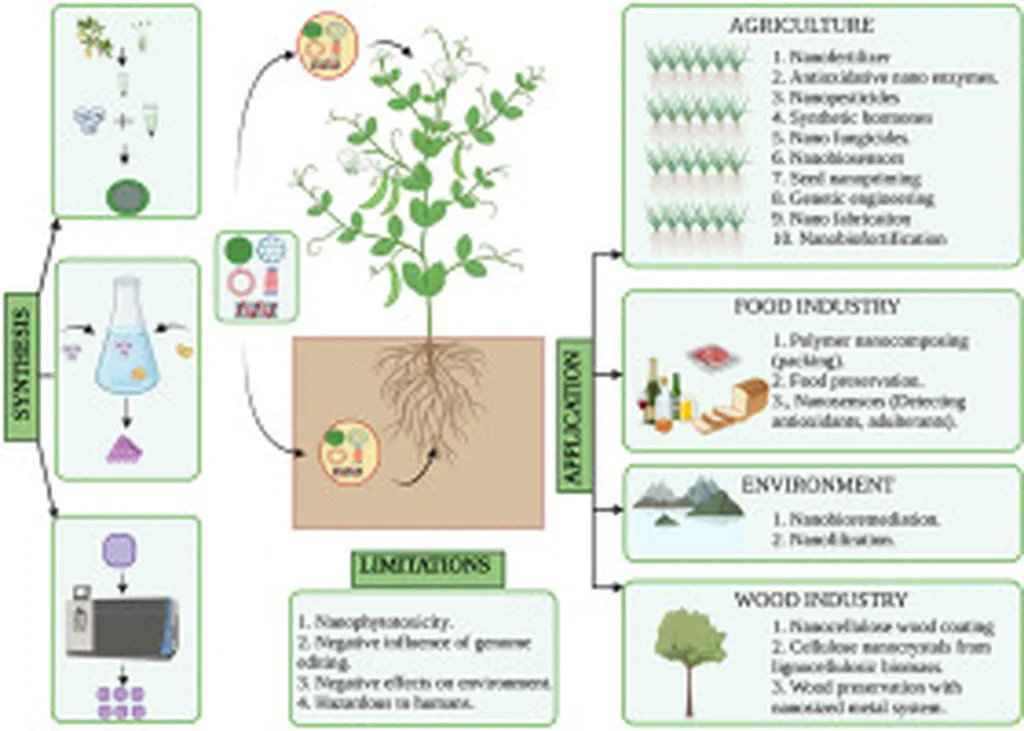In the heart of India’s agricultural landscape, a groundbreaking study led by Pradeep Kumar from the Department of Microbiology at CCS Haryana Agricultural University in Hisar is revolutionizing the way we think about wheat cultivation and biofortification. The research, published in the esteemed journal Frontiers in Nanotechnology, which translates to the forefront of nanotechnology research, explores the synergistic potential of bacteria-assisted iron and zinc nanoparticles in enhancing wheat growth and nutrient content.
The study isolated four bacteria from metal-enriched sites and rhizosphere soil, evaluating their tolerance to iron and zinc. Among them, a standout performer emerged: strain AW5. This bacterium exhibited remarkable plant growth-promoting (PGP) traits, including the production of siderophores, indole-3-acetic acid, and enhanced solubilization of zinc and phosphorus. But what truly sets this research apart is AW5’s ability to synthesize iron and zinc nanoparticles (NPs) of specific sizes, which were then used to bolster wheat growth and nutrient content.
“Our findings demonstrate that the combination of plant growth-promoting rhizobacteria (PGPR) and nanoparticles can significantly improve wheat growth and nutrient uptake,” Kumar explained. The study revealed that seed priming with these nanoparticles, combined with PGPR, led to substantial increases in shoot and root length, wheat dry biomass, 100-grain weight, and iron and zinc content compared to traditional fertilizer use.
The implications for the agricultural sector are profound. By enhancing nutrient uptake and plant growth, this innovative approach to biofortification could lead to more resilient and nutrient-rich wheat crops. This, in turn, could address critical issues of malnutrition and food security, particularly in regions where wheat is a dietary staple.
Moreover, the study’s findings suggest that nanoparticle treatment can improve plant growth hormones, chlorophyll content, and soil microbial enzymes, ultimately enhancing root morphology, photosynthesis, and soil enzymatic activities. “The synergistic impact of nanoparticles bolstered plant–bacteria interactions, increasing nutrient uptake by improving root architecture and facilitating the availability of iron and zinc nanoparticles,” Kumar added.
The commercial potential of this research is vast. As the global population continues to grow, the demand for sustainable and efficient agricultural practices will only increase. This study provides a promising avenue for achieving agricultural sustainability through the innovative use of nanobiofertilizers. By integrating bacteria-assisted nanoparticles into conventional farming practices, farmers could see improved crop yields and nutrient content, ultimately benefiting both their livelihoods and the environment.
The research also opens up new possibilities for the energy sector. As the world shifts towards more sustainable energy sources, the efficient use of nutrients in agriculture can contribute to a more sustainable food system, reducing the environmental footprint of food production. This, in turn, can support the broader goals of energy sustainability by reducing the need for resource-intensive agricultural practices.
In conclusion, the work of Pradeep Kumar and his team represents a significant step forward in the field of agricultural sustainability. By harnessing the power of bacteria-assisted nanoparticles, this research offers a novel approach to biofortification and crop productivity, with far-reaching implications for the agricultural and energy sectors. As we continue to explore the potential of nanotechnology in agriculture, studies like this one will undoubtedly play a crucial role in shaping the future of sustainable farming practices.

